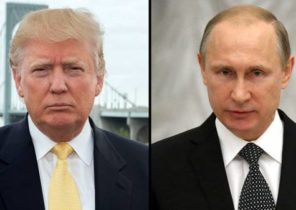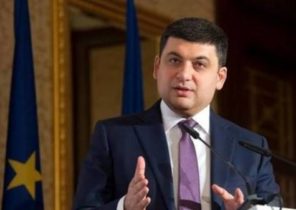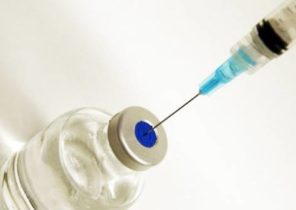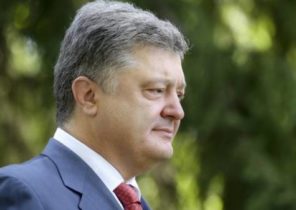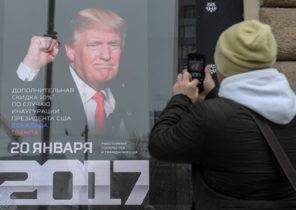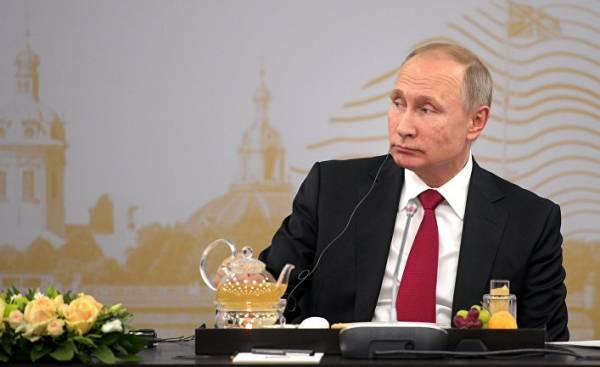
The main thing not a person but a program. This conclusion follows from the steps taken by the Kremlin during the early preparation for the upcoming next year’s presidential elections. Intrigue the outcome doesn’t hold: if at the start there will be an acting President Vladimir Putin (before he announced), he also, obviously, come first to the finish — and by a wide margin. The rating of its support among the Russian population, according to all opinion polls of recent years, consistently exceeds 80%. And even if these percentages as the opposition claims, is an exaggeration, it is unlikely that fundamental.
So, perhaps, the main issue of the upcoming presidential campaign, not the identity of the winner, and the program that he will sell to the highest state post. And most importantly, what excites people is the economic problems. Since 2008 the country has experienced two waves of a serious crisis — the first global and then internal, caused by falling oil prices and international sanctions. From the last wave of Russian economy is not moved until now. Incomes in real terms fall for the third consecutive year, the budget remains in deficit. In this regard, growing all sorts of taxes and levies. At the same time people can only dream about the past rate of growth of wages and pensions. All this, of course, adds to social tension in the society and contributes to the growth of protest moods.
Realizing the seriousness of the problem, last year the Kremlin ordered from two groups of distinguished experts-economists, standing on a different ideological positions to develop socio-economic strategy of the country till 2035. One of them, hold liberal approaches to economy, is headed by longtime Putin ally, in the past many years the Minister of Finance and now head of the Center for strategic research (CSR) Alexei Kudrin. The second — widely known in the business community, the business Ombudsman, the founder of the Growth Boris Titov.
Calling from two teams, the President thereby demonstrating to society the absence of a monopoly on the truth, at least in economic matters, and skillfully throws a bone to the electorate: now liberal-minded part of it may cheer for Kudrin, as “patriots” and statists for Titov.
The main objective of both strategies is to offer such recipes to in the foreseeable future, the Russian economy could achieve annual growth rates above the world average, which is now equal to about 3%. This seems extremely ambitious goal given the fact that this figure in recent years in the country fell.
Now both programs are ready, and at the recent St. Petersburg international economic forum, their main provisions have been tested. Main question: which of the two strategies will choose Vladimir Putin and how he did dispose of the development?
Priorities Kudrin
Alexei Kudrin speaks with policy statements about the middle of last year. But what exactly was included in the final version of its strategy are not yet known. Document publicly until now not represented by anyone, in fact, except for President Putin.
But according to numerous statements by its chief of the main thesis of the document, it is possible to judge. As Kudrin said, his strategy has three main priorities and multiple projects. Top priorities — people, technology, and public administration.
The author believes that the government should increase spending on education and health care — 0.7% of GDP for each industry over the next six years. Infrastructure — road construction, creation of new highways, implementation of technologies in modern transport — it is proposed to increase funding to 0.8% of GDP.
To implement this plan, it is necessary to reduce (or at least not to increase) the Federal budget expenditures on defense, security, and national goals. In addition, Kudrin believes that it is possible to increase the target size of the budget deficit by 1 to 1.5% of GDP.
At the same time, the CSR program supports the overall course of the Ministry of Finance to reduce the budget deficit and tight monetary policy of the Russian Central Bank aimed at achieving the annual inflation rate at around 4%.
Most likely, the document will include a proposal for raising the retirement age to reduce burdensome fiscal costs of pension provision. In the preliminary materials CSR was proposed to raise the retirement age to 63 years for women and 65 years for men in increments of six months per year from 2019.
The result of increased investment in human capital, the transition to new technologies, structural reforms, improvement of business climate and other measures should be a doubling non-oil exports, the growth of labor productivity by a third and the output of the economic growth of 3-3. 5% in the period to 2024.
Recipes from the “Stolypin”
The alternative program is created under the editorship of Boris Titov, a group of economists, United in the influential in Russia “Stolypin club”. In contrast to the “kudrintsah”, their Growth Strategy they introduced several months ago, and all the discussions make it as open and public.
But from the criticism of their opponents is not saved, and the main complaint associated with dirigiste approaches that the strategy of “Stolypina” professes. Its key element is the mitigation of monetary policy, investing into the economy large sums of money and providing conditions that facilitate the emergence of long-term and cheap loans.
The authors of the Strategy of Growth suggested that the Central Bank should abandon inflation targeting and begin to reduce the key rate from the current 9-10% to the level of “inflation plus 2%”. Volume “swap” of money into the economy should be about 1.5 trillion rubles, which will be used for capitalization of development institutions and refinance loan programs aimed at productive investment.
“We need cheap loans, low rates, a normal rate of return on capital that is important in the first place,” says Titov. In his opinion, administrative barriers and corruption rents are not as significant for business.
The effect of the implementation of its proposals “Stolypin club” estimates are higher than CSR — according to his calculations, to really get on the pace of GDP growth above 5% per year.
How to cross a snake and a hedgehog
It is clear that the authors of the competing strategies and similar economic interests are actively sharing critical stelae to the development of each other. For example, little popular the idea of “kudrintsah” about raising the retirement age does not cause before the presidential election, no enthusiasm, neither in the Kremlin nor in the broad masses of the population. In turn, does not hold water and the idea of “Stolypina” about to flood the economy with money. The experience of the previous years have taught the Russians that the lion’s share of the money will not go to any “development”, and will settle in the pockets of the elected oligarchs. People will receive only a surge of inflation, which was just beginning to slow down.
In this regard, in the corridors of power increasingly exaggerated version of that Putin is not going to make a choice in favor of one of two competing strategies. As the official programme, he will take the government’s strategy, which is now hard at work in the Ministry of economic development. At the same time its authors will be recommended for inclusion in the final text, “all the best”, that contain strategies and Titov Kudrin.
What kind of document was born in the bowels of bureaucratic offices — while covered in complete darkness. Most likely, the “fourth term” of President Putin will gather the final programme until the autumn of this year. The question arises: is it possible, in principle, convergence of existing programmes? Officials respond to it positively. Deputy Prime Minister of Russia Arkady Dvorkovich even counted that programs and Titov Kudrin match 70%.
The authors themselves competing strategies, though not say it aloud, but are terrified of what they can offer to cross “snake” and “hedgehog” — so different and they have mutually exclusive approaches to the key positions.
We would venture to suggest that whatever strategy the government may take to live and develop on it really is not. We must assume that, when the elections are held, all of these programs, as well as their numerous instruments-predecessors, will be safely pushed to the farthest shelf.
Upset about this, perhaps not. The reality of 2035 will still be completely different than written on paper. The memory is not too young, the author of these lines was not a single strategy which would consider, for example, the presence of economic crisis or accurately predicted the price of oil, not to mention the anticipation of political events, election results, wars, global conflicts or natural disasters. Meanwhile, all these events happen in real life and certainly fundamentally unpredictable and will change the world and the country in 18 years.
